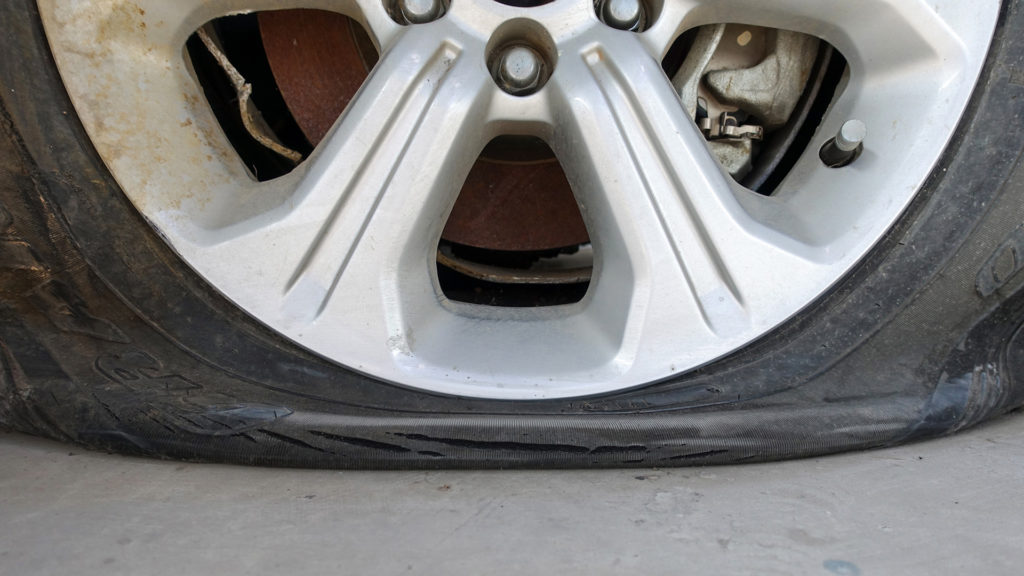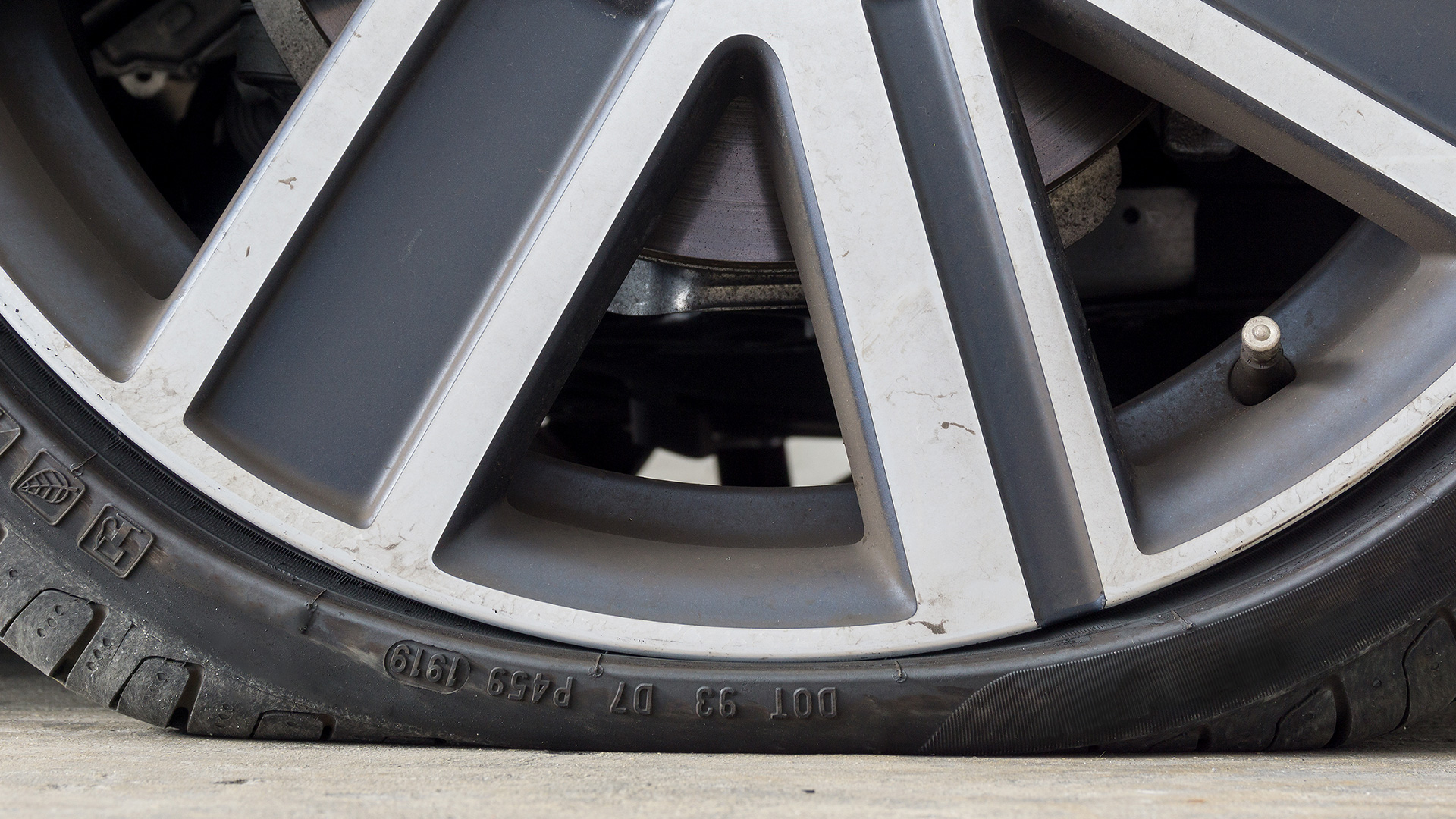If you own a luxury or electric vehicle, it probably came with run-flat tires. Several automakers now outfit their vehicles with run-flat tires as standard, including Audi, BMW, Cadillac, Infiniti, Lexus, Mercedes-Benz, and MINI. Many car owners aren’t even aware that they have run-flat tires until they get a flat. This can be dangerous, because they don’t know the limits of the run-flat tires and how to safely drive on them once they’re flat. Now is the time to check if your vehicle has run-flat tires and if so, read the rest of our guide so you’re prepared if you ever get a flat tire.
What are run-flat tires?
Just as their name suggests, run-flat tires are tires that can be driven on once they get a puncture and are flat. The purpose of run-flat tires is to allow the driver to get somewhere safe to change the tire, although most vehicles with run-flat tires don’t have a spare tire. For those owners, the only real option is to head to a tire shop for a replacement tire.
Once a run-flat tire becomes flat, it can be driven on at a limited speed for a limited distance. This can vary from manufacturer to manufacturer, but generally it’s up to 50 mph and up to 50 miles of range. Some run-flat tires will have ranges from 25 miles to 200 miles. We recommend knowing the limits of your specific run-flat tires before setting out on the road.
How can you drive on run-flat tires when they’re flat?
Run-flat tires feature unique construction so they can be driven on once they’ve experienced a puncture or air loss. According to major tire manufacturer Bridgestone, there are two main types of run-flat tire systems: self-supporting system and support ring system.
With the self-supporting system, the tire has a reinforced sidewall construction designed to support the vehicle even when the tire loses air. The support ring system utilizes a ring of hard rubber or another structure to support the vehicle’s weight in the event of air loss. It’s less important to know the type of system used in your run-flat tire, since it ultimately won’t make a difference to you.
What you do need to know is that run-flat tires should only be used on a vehicle equipped with a tire pressure monitoring system (TPMS). Without TPMS alerts, you won’t know if you’re driving on an underinflated or flat tire and that can be dangerous with run-flat tires.

Photo credit: UnderhilStudio / Shutterstock.com
The advantages of run-flat tires
The main advantage of run-flat tires is an obvious one: you can continue driving on a flat tire until you get to a safe location to replace it. With traditional non-run-flat tires, you’d have to pull off to the side of the road or on a busy freeway to change your tire, which can be dangerous and has been fatal.
Since run-flat tires are designed to be driven on when flat, their structure makes them more stable than conventional tires once they lose air. That means run-flat tires offer better control and stability when flat, compared to a normal tire.
Some may consider this a disadvantage, but vehicles equipped with run-flat tires likely won’t have a spare tire. Not only does that reduce the overall weight of your vehicle, but it does increase cargo space.
The disadvantages of run-flat tires
While run-flat tires offer better control and stability when flat compared to conventional tires, they do have a harsher ride during normal operation. That’s because the tires have stiffer sidewalls, but oftentimes the automaker will adjust the suspension to offset the harsher ride.
Because of their construction, it’s also recommended to avoid aggressive acceleration, cornering, and braking on run-flat tires. You should also check manufacturer’s recommendations before carrying a heavy load or even towing a trailer on run-flat tires.
Another disadvantage of run-flat tires is their treadwear. According to a study conducted by J.D. Power in 2013, customers with vehicles equipped with standard tires replace their tires after an average of 22,559 miles — which was more than 6,000 miles beyond the average life of run-flat tires. Generally, run-flat tires won’t have the same high-mile tread life that’s found in a conventional tire.
Lastly, and arguably the biggest disadvantage of run-flat tires is their cost. They are typically much more expensive than conventional tires and once damaged, they often can’t be repaired. So unlike conventional tires that can be patched or plugged, run-flat tires will need to be replaced.
Although they have grown in popularity in recent years, run-flat tires still aren’t readily available everywhere. If you happen to experience a blowout while on a road trip, that local tire store may not carry run-flat tires and you’ll have to wait for it to be shipped.
Even if your vehicle rides on run-flat tires, you should keep them properly inflated at all times. We always recommend owning your own tire pressure gauge and portable tire inflator to keep your tires at just the right PSI at all times.
